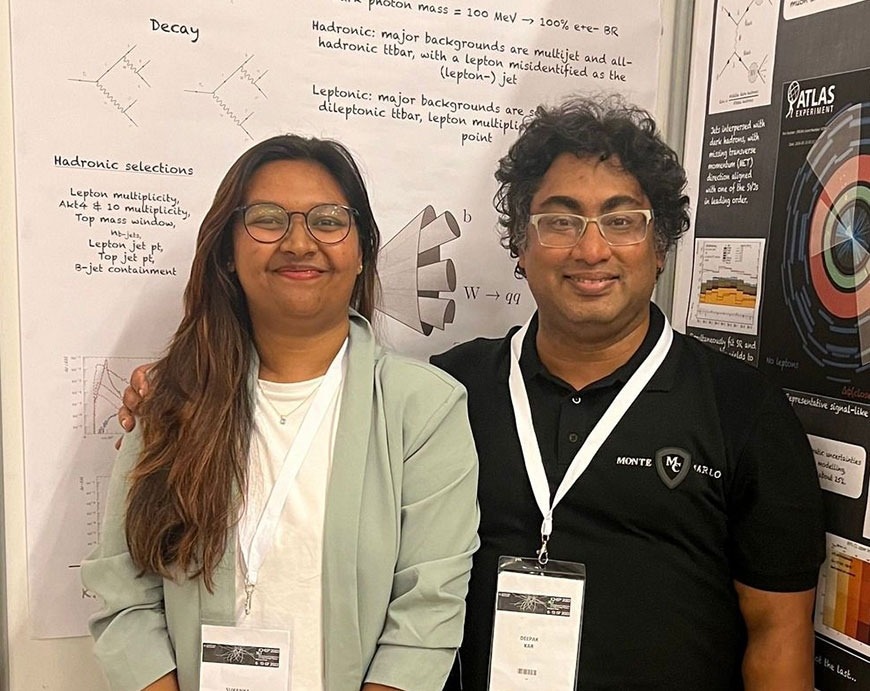Scientists are investigating the potential production of Dark Matter particles within a stream of standard model particles.

Image Credit: University of the Witwatersrand Johannesburg.
The presence of Dark Matter remains a longstanding enigma in the universe, constituting approximately a quarter of its composition. Despite its significant share, Dark Matter exhibits minimal interaction with ordinary matter.
The confirmation of Dark Matter’s existence stems from various astrophysical and cosmological observations, including recent captivating images captured by the James Webb Space Telescope.
But as of now, there have been no reported experimental observations of Dark Matter. The question of Dark Matter’s existence has engaged high-energy and astrophysicists worldwide for decades.
This is the reason we do research in basic science, probing the deepest mysteries of the universe. The Large Hadron Collider at CERN is the largest experiment ever built, and particle collisions creating big-bang like condition can be exploited to look for hints of dark matter.
Deepak Kar, Professor, School of Physics, University of the Witwatersrand
Kar and Sukanya Sinha, his former Ph.D. student, currently serving as a Postdoctoral Researcher at the University of Manchester, have innovatively spearheaded a novel approach to detecting Dark Matter while working on the ATLAS experiment at CERN.
Their groundbreaking research has been published in the journal Physics Letters B.
There have been plethora of collider searches for Dark Matter over the past few decades so far have focused on weakly interacting massive particles, termed WIMPs. WIMPS is one class of particles that are hypothesized to explain Dark Matter as they do not absorb or emit light and don’t interact strongly with other particles.
Deepak Kar, Professor, School of Physics, University of the Witwatersrand
Kar added, “However, as no evidence of WIMPS’ has been found so far, we realized that the search for Dark Matter needed a paradigm shift. What we were wondering, was whether Dark Matter particles actually are produced inside a jet of standard model particles,” said Kar.
This exploration led to identifying a previously unexamined detector signature called semi-visible jets. In high-energy proton collisions, the outcome often involves the creation of a concentrated spray of particles, referred to as jets, resulting from the decay of ordinary quarks or gluons.
Semi-visible jets represent a novel scenario wherein hypothetical dark quarks partially decay into Standard-Model quarks (known particles) and partially into stable dark hadrons (the “invisible fraction”).
As these semi-visible jets are produced in pairs, typically accompanied by additional Standard-Model jets, the detector registers an imbalance of energy or missing energy when the jets are not perfectly balanced.
The direction of the missing energy is frequently aligned with one of the semi-visible jets. The search for semi-visible jets poses a significant challenge, as this event signature can also occur due to inaccurately measured jets in the detector.
Kar and Sinha’s innovative approach to investigating dark matter opens up new avenues for exploring its presence by focusing on the distinctive characteristics of semi-visible jets.
Even though my Ph.D. thesis does not contain a discovery of Dark Matter, it sets the first and rather stringent upper bounds on this production mode, and already inspiring further studies.
Sukanya Sinha, Postdoctoral Researcher, University of Manchester
Journal Reference:
The ATLAS Collaboration (2023) Search for non-resonant production of semi-visible jets using Run 2 data in ATLAS. Physics Letters B. doi.org/10.1016/j.physletb.2023.138324.